Potrebujeme váš súhlas na využitie jednotlivých dát, aby sa vám okrem iného mohli ukazovať informácie týkajúce sa vašich záujmov. Súhlas udelíte kliknutím na tlačidlo „OK“.
ASTM D7690-11
Standard Practice for Microscopic Characterization of Particles from In-Service Lubricants by Analytical Ferrography
Automaticky preložený názov:
Štandardné praktiky pre Mikroskopické Charakteristika častíc z In-Service Lubricants analytickú Ferrography
NORMA vydaná dňa 1.1.2011
Informácie o norme:
Označenie normy: ASTM D7690-11
Poznámka: NEPLATNÁ
Dátum vydania normy: 1.1.2011
Kód tovaru: NS-38965
Počet strán: 11
Približná hmotnosť: 33 g (0.07 libier)
Krajina: Americká technická norma
Kategória: Technické normy ASTM
Kategórie - podobné normy:
Anotácia textu normy ASTM D7690-11 :
Keywords:
contaminant particles, condition monitoring, ferrography, filter patch, in-service lubricants, membrane filtration, optical microscopy, wear, wear particles, ICS Number Code 75.100 (Lubricants, industrial oils and related products)
Doplňujúce informácie
| Significance and Use | ||||||||
|
The objective of ferrography is to diagnose the operational condition of the machine sampled based on the quantity and type of particles observed in the oil. After break-in, normally running machines exhibit consistent particle concentration and particle types from sample to sample. An increase in particle concentration, accompanied by an increase in size and severity of particle types is indicative of initiation of a fault. This practice describes commonly found particles in in-service lubricants, but does not address methodology for quantification of particle concentration. This practice is provided to promote improved and expanded use of ferrographic analysis with in-service lubricant analysis. It helps overcome some perceived complexity and resulting intimidation that effectively limits ferrographic analysis to the hands of a specialized and very limited number of practitioners. Standardized terminology and common reporting formats provide consistent interpretation and general understanding. Without particulate debris analysis, in-service lubricant analysis results often fall short of concluding likely root cause or potential severity from analytical results because of missing information about the possible identification or extent of damaging mechanisms. Ferrographic analysis, as described in this practice, provides additional particle identification capabilities beyond methods described in Guide for the following reasons: (1) The ferrographic particle separation method is magnetic thus making it possible to readily distinguish between ferrous and nonferrous wear particles. (2) Ferrography separates ferrous (magnetic) particles by size. (3) Deposition is on a glass substrate so that particles may be examined using transmitted light as well as reflected light allowing particle types to be identified that cannot be identified when examination is done using only reflected light. (4) Ferrograms may be heat treated providing important distinctions between ferrous alloy types (steel versus cast iron), further distinctions among various nonferrous alloys and distinctions between inorganic and organic particles. Caution must be exercised when drawing conclusions from the particles found in a particular sample, especially if the sample being examined is the first from that type of machine. Some machines, during normal operation, generate wear particles that would be considered highly abnormal in other machines. For example, many gear boxes generate severe wear particles throughout their expected service life, whereas just a few severe wear particles from an aircraft gas turbine oil sample may be highly abnormal. Sound diagnostics require that a baseline, or typical wear particle signature, be established for each machine type under surveillance. |
||||||||
| 1. Scope | ||||||||
|
1.1 This practice covers the identification by optical microscopy of wear and contaminant particles commonly found in used lubricant and hydraulic oil samples that have been deposited on ferrograms. This practice relates to the identification of particles, but not to methods of determining particle concentration. 1.2 This practice interfaces with but generally excludes particles generated in the absence of lubrication, such as may be generated by erosion, impaction, gouging, or polishing. 1.3 The values stated in SI units are to be regarded as standard. No other units of measurement are included in this standard. 1.4 This standard does not purport to address all of the safety concerns, if any, associated with its use. It is the responsibility of the user of this standard to establish appropriate safety and health practices and determine the applicability of regulatory limitations prior to use. |
||||||||
| 2. Referenced Documents | ||||||||
|
Podobné normy:
Historická
1.5.2010
Historická
1.10.2009
Historická
1.5.2010
Historická
15.4.2012
Historická
1.12.2013
Historická
15.4.2012


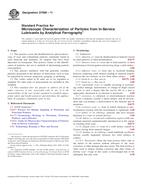
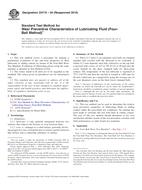 ASTM D4172-94(2010)..
ASTM D4172-94(2010)..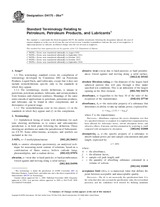 ASTM D4175-09ae5..
ASTM D4175-09ae5.. ASTM D4177-95(2010)..
ASTM D4177-95(2010)..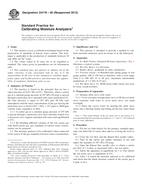 ASTM D4178-82(2012)..
ASTM D4178-82(2012)..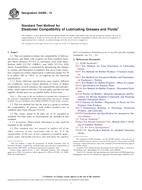 ASTM D4289-13
ASTM D4289-13 ASTM D4290-07(2012)..
ASTM D4290-07(2012)..
 Cookies
Cookies
